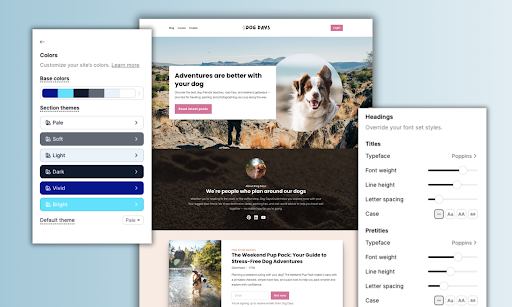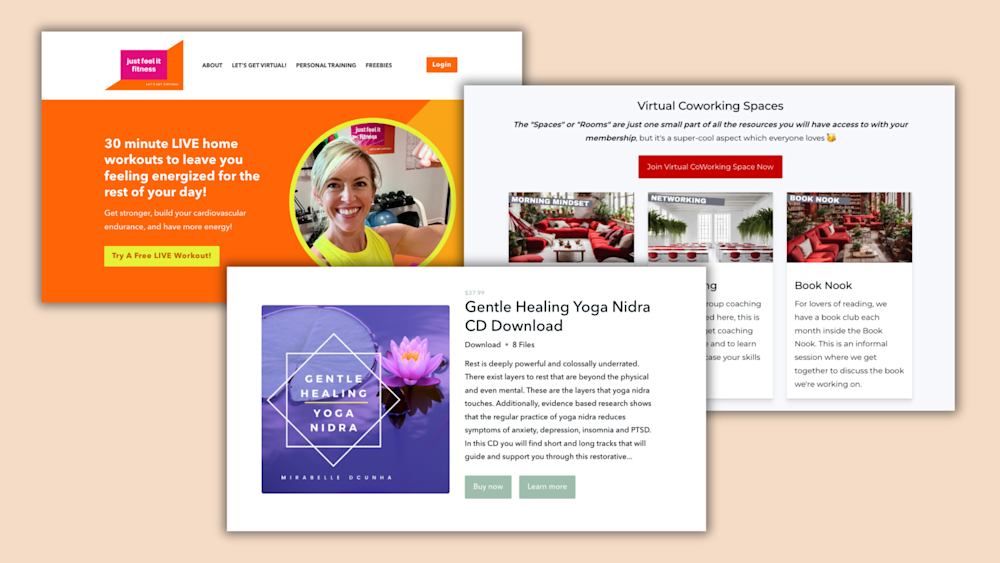"It was a nightmare," says Em Connors of The Creative Bodega.
When Em first launched her Canva course, a plugin she was using on a WordPress site wasn't working. She had students signed up for the course, and on day one, nobody could log in.
"We couldn't figure out why. Talk about anxiety! I don't think my heart rate has ever been as high, and there was absolutely no one to talk to," she remembers. Em furiously searched for answers online and in forums, including a Facebook group of plugin customers, but nothing.
Unfortunately, this might be a familiar experience for many creators. Too many platforms in the creator economy don't put creators' needs first — operating with questionable practices that include a lack of transparency, deceptive fees, and silence instead of support.
Every creator deserves creator-friendly tools, which prioritize their needs and support their growth. To get a sense of what creator friendliness — and the lack of it — actually looks like, we spoke with five creators about their experiences:
-
Em Connors, solopreneur, marketing and branding expert, educator, and founder of The Creative Bodega.
-
Becky Mollenkamp, feminist life coach, podcaster, and founder of The Gutsy Boss Club community.
-
Adrian Dalsus, musician, marketer, teacher, and founder of Despegue Musical.
-
Khe Hy, a.k.a. "Oprah for Millennials", the founder of RadReads and a Notion pro.
-
Emily Mills, professional illustrator, author, and founder of Sketchnote Academy
What makes a platform creator-friendly?
So what does creator friendliness mean? For Emily Mills, it means operating with the best interest of the creator in mind:
Creator friendliness is being in the best interest of the creator.
"Best interest could mean ease of use, ease of integrations, fair pricing and payment structures, and continued ownership of audience and intellectual property," she explains.
There are many factors that make a platform creator-friendly — but it all boils down to whether creators feel like the platform has their back. Which of those factors are most important can depend on the creator.
1. Accessible support
Whenever you get stuck, you should be able to get the help you need. It sounds simple, but it isn't always available. For Em, creator friendliness means being able to connect with a real human being to work through any questions or issues.
Creator friendliness is being able to ask a question to someone and get an answer quickly. I just want to be able to talk to somebody, which is rare these days.
As entrepreneurs crafting experiences and cultivating relationships, most creators aim to operate this way in their own businesses. "I'm going to help you as best as I can," Em says. "Ask me your questions — I may not always have the answer, but I'm going to try. I think that makes people feel really comfortable."
Accessible support is a critical part of the customer experience. Em explains, "It's like going to a restaurant and having an amazing waiter that just makes the experience so much better. If you go to a restaurant, and the service is terrible and they're not nice to you — I'm never going back there again."
Becky agrees: "Knowing that the company is dedicated to being responsive to its customers' needs means you can always count on getting the help you need in a timely manner. If a company doesn’t do this from the start, run the other way."
2. Ease of use
Creator-friendly tools also need to be easy to use across backgrounds and experience levels. Just because a product feels intuitive for one group of people doesn't mean it's intuitive for everyone.
Addressing the needs of myriad age groups is important because anyone can become a creator at any age!
Becky views herself as a good yardstick:
"One way for me to gauge whether a tool is creator-friendly is whether I can intuitively figure out how to use it without wanting to scream. Although I’m pretty tech-savvy, I am in my forties and no longer the prime demographic for tech companies."
She elaborates, "Too often, tools are made for people who were raised on the Internet, not folks like myself. If I can easily figure out how to use something, that means the company thought beyond the twenty-somethings and really cares about making a tool for all creators."
3. Provides for the creator journey ahead
A platform should also work for creators all along their journey, says Khe Hy — whether it's making a sales page responsive or a checkout experience really smooth, down to having features that handle workflows involving affiliates or upsells.
Creator-friendly means that a product appreciates and anticipates the needs of a creator.
Creator friendliness provides for whatever's next for the creator "before they even know they need to get there," he explains. "A lot of times, people are starting with something very simple and then expanding their product offering."
The stress of unfriendly creator platforms
It's so frustrating to feel like you can't get the help you need from a platform you rely on to run your business.
Like Em, Becky has found herself dealing with the silent treatment. "I started my course-creating experience with a platform that had horrible customer service," she shares. "When I had problems, I had to send an email. There was no automatic response to acknowledge that they received the question. And I never got answers to most of the questions I submitted."
"I guess it’s not surprising that I dumped that tool after about four months when I found Podia. The pricing and capabilities were attractive, but what really sold — and kept — me with Podia was the customer service. When I ask a question, I always get a prompt answer. That matters so much, particularly for new content creators, but sadly many companies don’t deliver on service."
Creator friendliness isn't limited to support requests. Companies have the opportunity to put creators' needs first throughout the entire customer experience. Missing or disregarding these opportunities leaves creators feeling like they're at the mercy of the platforms' whims.
For example, Emily finds that TikTok doesn't serve creators first. She found that when she didn't log in for a month, her video stats plateaued. When she started using the app again, her videos got more engagement. "Their algorithm serves only themselves! The goal is not to pump you up, but to get people to stay on TikTok," she observes.
"It's like TikTok only promotes your stuff if you're there to get addicted like everyone else. It leaves a bad taste in my mouth knowing I have to engage to get engagement. Not all creators have time or teams for that!"
For Adrian, a platform's disregard for creators looks like suddenly adding or deleting features that require him to re-learn how to use the tool. And communicating with supposed experts doesn't feel supportive when, as he points out, "you can clearly see that they're just trying to convince you to spend more time and money inside of the platform."
The worst experience Adrian had as a creator and entrepreneur was with a website tool. "It needed a long learning curve to achieve very simple things, and could have an error at any time due to a plugin, update, or bad luck," he remembers.
"Knowing that the websites and landing pages of my business and clients could stop working at any time, despite how expensive it becomes to hire all the necessary tools to have a professional site, is outrageous."
We can practically hear his blood pressure rising as he tells us, "Just thinking of [these] platforms makes me feel very frustrated, deceived, helpless, powerless, insecure, stressed, and anxious for all the bad things that could go wrong in which I can't do anything!"
How to find creator-friendly platforms
As with most purchasing decisions, creators can be taken in by brands. But as Adrian explains, they're learning from hard-won experience how to spot a platform that puts creator needs first:
"Nowadays, it's easier to recognize which companies have real growth potential and which are just trying to catch customers like spiders on their web. The problem is that the latter tend to sell very well.
The result? Creators think they've made the best decision but get frustrated over and over again by having to figure things out on their own, without help from their service providers."
So what should you avoid? "Tools that increase their costs as you grow [your database], like the vast majority of email marketing providers. Services that have extra payments or hidden fees within their subscriptions to access templates, training, or information."
Also, watch out for tools that cost a lot, especially as you're starting out. Khe warns, "Creators are willing to pay money for services, but if you start too expensive — either through your tiering or through the way you structure your plans — it can be too expensive, too early." Adrian adds, "Having to pay over $100 upfront per month — just to learn how to use a platform or try to figure out how to make money there simply doesn't work for the majority of creators."
What attributes do you look for? Adrian recommends seeking out tools developed with the creator in mind from the start, with affordable pricing, customer support, and transparency from the company.
Although it sounds cliché, ask what are the values, mission, and vision of the company? What are their future plans? Are they really looking to grow? Or did they develop a product or service that they’re now trying to sell, with no interest in improving it?
There are many additional factors that go into making a platform creator-friendly, from how transaction fees are structured to whether you can take direct payments. (Learn more about how Podia's CEO, Spencer Fry, thinks about creator friendliness and why it's a founding principle for the company.)
As the creator economy continues to grow, we hope to see creator friendliness grow as well, to better benefit the creators at the core of it. They're already starting to shift the balance with their wallets.
As Becky sums up, "There are always choices. I'll always give my dollars to the companies that actually care about my experience, not just about taking my money."



